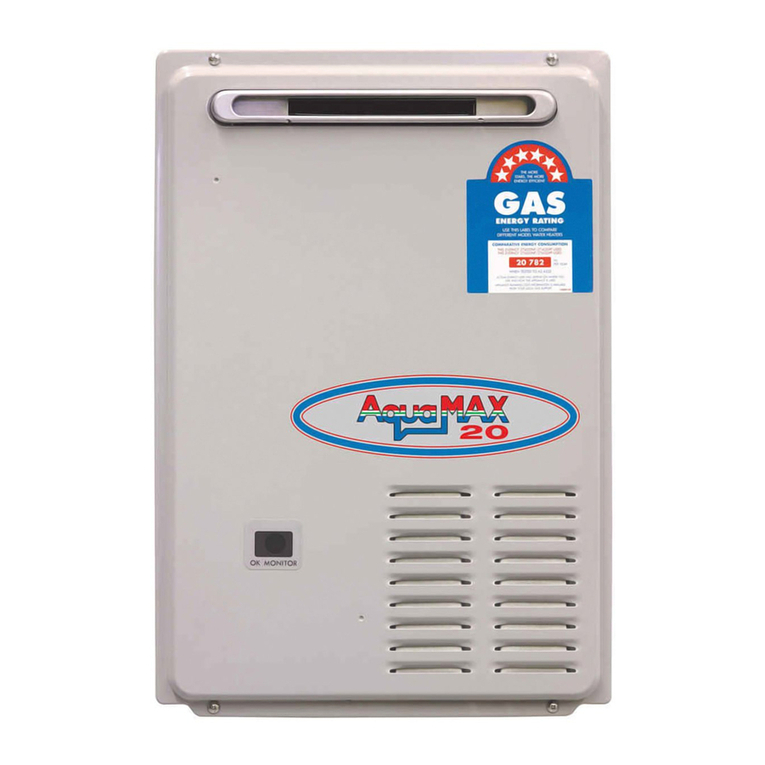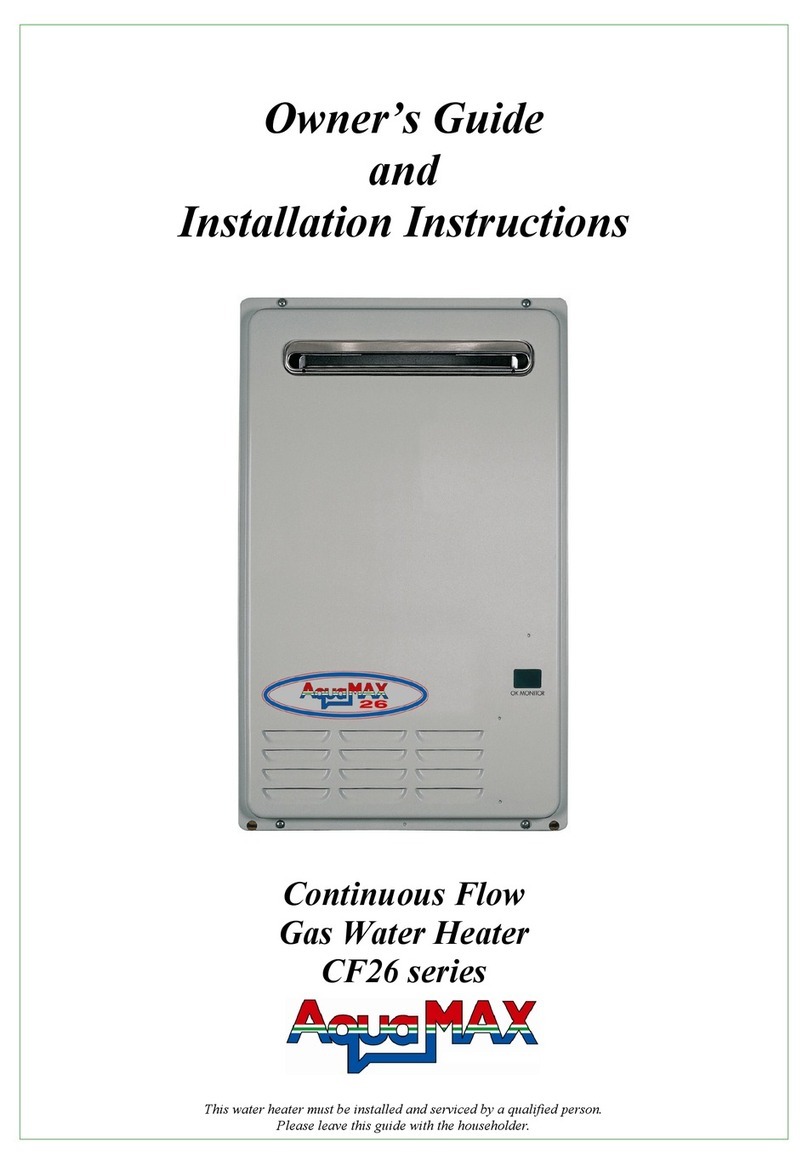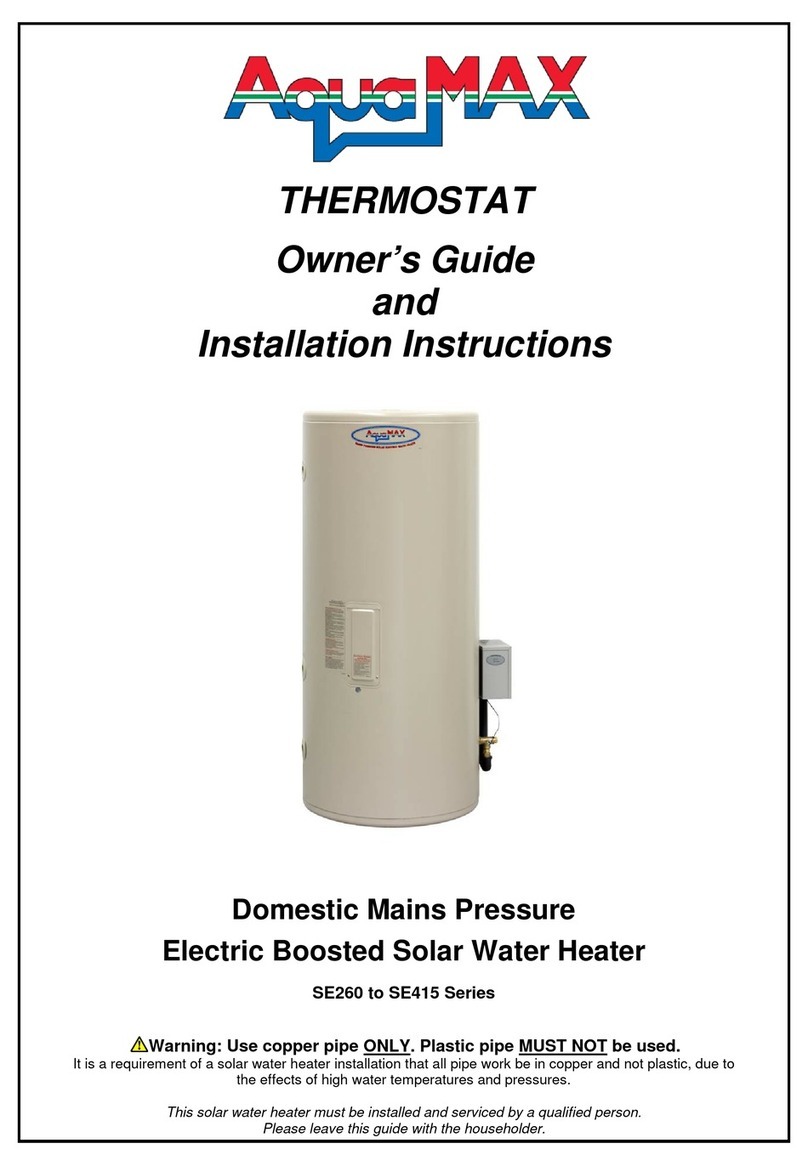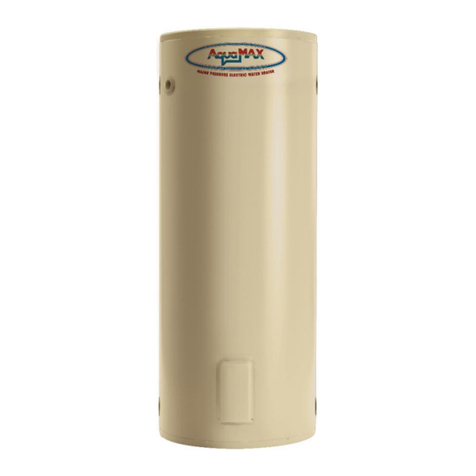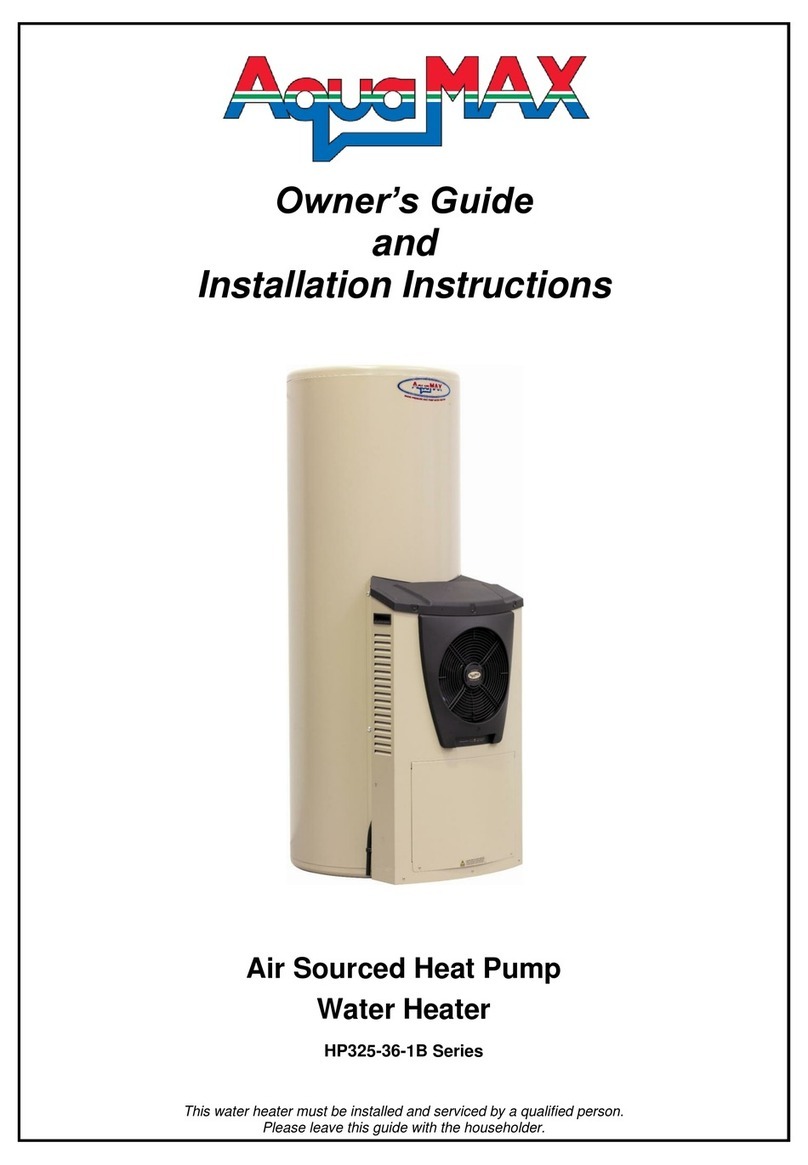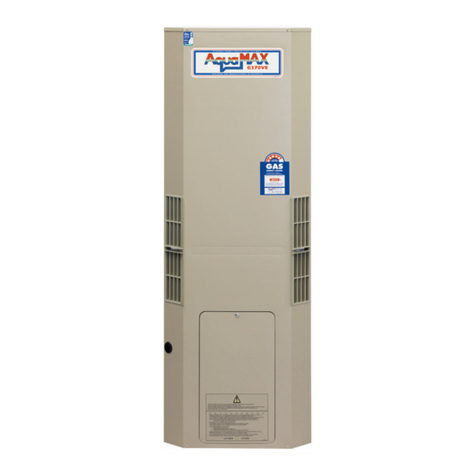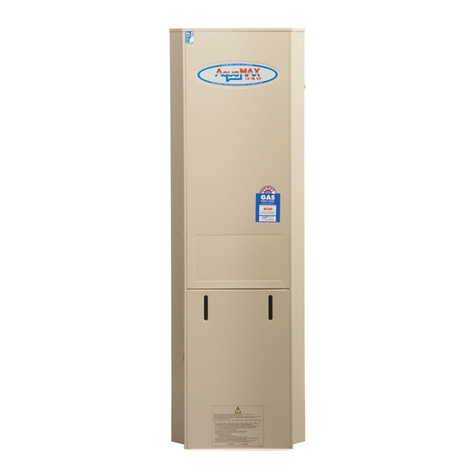8
Expansion Control Valve (ECV)
In many areas, including South Australia, Western Australia and scaling water areas, an ECV is fitted to the
cold water supply line to the solar water heater (refer to the “Cold Water Supply Plumbing Arrangement”
diagram on page 21). The ECV may discharge a small quantity of water from its drain line during the heating
period instead of the PTR valve on the solar water heater.
Operate the easing lever on the expansion control valve once every six months. It is very important you
raise and lower the lever gently.
The expansion control valve should be checked for performance or replaced at intervals not exceeding
5 years, or more frequently in areas where there is a high incidence of water deposits (refer to “Water
Chemistry” on page 9).
Anode
The anode installed in your solar storage cylinder has been designed to slowly dissipate whilst protecting the
solar storage cylinder. If the solar water heater is not used for two (2) weeks or more, a quantity of hydrogen
gas, which is highly flammable, may accumulate in the solar water heater. To dissipate this gas safely, it is
recommended that a hot tap be turned on for several minutes or until discharge of gas ceases. Use a sink,
basin, or bath outlet, but not a dishwasher, clothes washer or other appliance. During this procedure, there
must be no smoking, open flame, or any electrical appliances operating nearby. If hydrogen is discharged
through the tap, it will probably make an unusual sound similar to air escaping.
The life of the solar storage cylinder may be extended by arranging a qualified person to periodically inspect
the anode and replace if required. If the anode is not replaced during a five year service (refer to “Major Five
Year Service” on page 7) then the maximum time after installation when the anode should be replaced for
this solar water heater is 8 years.
For water supplies which are either softened, desalinated or where the water supply may alternate between
a water tank and a reticulated public supply or another supply, it is recommended the anode be replaced
within 5 years of installation.
Cleaning the Solar Collector Glass
Ensure the solar collector glass is free of dust, salt spray or any other matter which may reduce the
effectiveness of the solar collectors. If the solar collector glass is dirty, the collectors can be hosed down with
fresh water or, if the solar collectors are accessible, wash the collector glass with fresh water and a soft
brush. Do not use cleaning agents. Note: The collector glass should only be hosed down or cleaned when
the solar collectors are cool (early morning is the best time).
Have any trees trimmed which may shade the solar collectors.
Flushing the Solar Collectors
It may be necessary to flush the solar collectors if there is sediment in the water supply. It is recommended
that the solar collectors are flushed every five years. This will assist in keeping the solar collectors, solar cold
pipe and solar hot pipe clear of sediment (refer to “Major Five Year Service” on page 7). The following
procedure should be performed in the morning, within three hours of sunrise, when the water temperature
inside the solar collectors is lowest.
To flush the solar collectors:
1. Open a hot water tap and allow water to run for five (5) minutes prior to flushing solar collectors.
2. Close the hot tap.
3. Wait a further five (5) minutes before attempting to flush the solar collectors. This will assist in the
transfer of any high temperature water in the solar collectors to the solar storage cylinder.
4. Using a flat bladed screwdriver, open the bleed valve located on the solar hot water inlet (from collector)
of the solar storage cylinder (labelled “Connection for Solar Return Pipe”) by rotating the bleed valve
screw (refer to diagram in the “Purging the Solar Collectors” section on page 9). Mains pressure will
force water to flow from the solar storage cylinder, through the pipe work and solar collectors, then out
through the bleed valve thereby flushing the collectors. This is evidenced by water spurting from the
drain line connected to the bleed valve. Allow water to flow from the bleed valve drain line for five (5)
minutes.
Warning: Exercise care to avoid any splashing of water, as water discharged from the solar
collectors may be of a very high temperature.
5. Using a flat bladed screwdriver, close the bleed valve.



